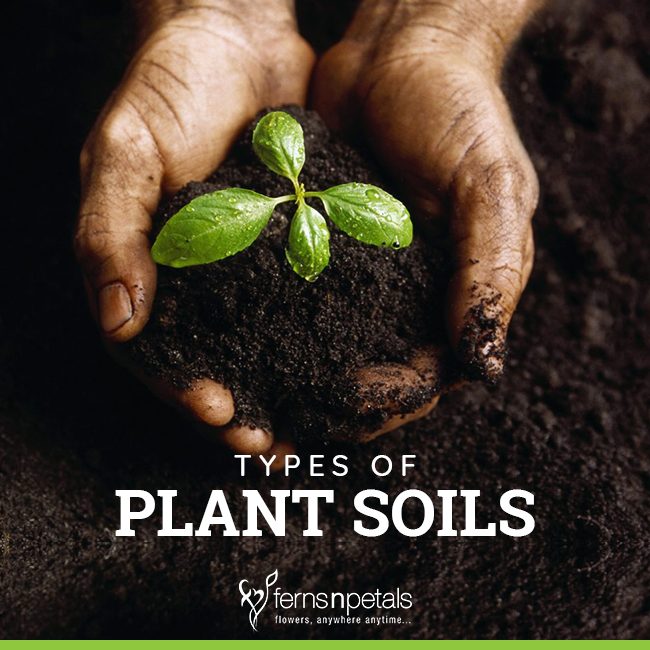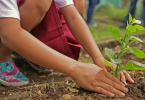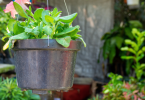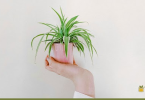The relationship between plants and soils is crucial. Plant – be it an air purifying or foliage or flowering, derives all nutrients from the soil. And thus, the soil selection to grow a certain kind of plant is important. The combination and concentration of mineral nutrients in the soil determine the fertility of the soil and that later provides growth and development to plants. This blog is all about various types of plant soils and thus it is important for you to learn that soil varies from place to place in response to five factors: climate, topography, organisms, the parent rock below surface, and time.
The major functions of soil are: providing a proper habitat for insects, fungi, bacteria, burrowing mammals, or other microorganisms; providing plant growth; recycling the raw materials; and providing a base for all engineering projects like our buildings, bridges, roads, etc.
What does Soil provide to Plants?
The major support that any type of soil provides the plant growth are:
Food Or Nutrients: The soil is the prime supplier of nutrients to plants and that can be enhanced with the application of fertilizers.
Temperature: During excessive hot or cold temperatures, plant growth becomes challenging. So, during those extreme times, the soil helps in insulating the plant roots from drastic fluctuations in outside temperature.
Oxygen: The spaces present among soil particles contain air that is the source of oxygen which the plant roots use to break down sugar and release the energy required for plant growth.
Anchor: The roots find a solid base in soil. They move laterally and vertically and thus stabilizes the plants.
Water: Every living being requires water for survival. When you water the soil, the water carries essential nutrients to plants & helps in maintaining cell size so that no wilting occurs. This stored water in the soil also helps the plants during the photosynthesis process.
Types of Plant Soils
Silty Soil:
The soil particles in silty soil are smaller as compared to sandy soil type. So, when you water it and roll on your palms, it will leave dirt on your palms. As the soil particles are small, so this soil retains water for a longer time. Silty soil is easily able to compact. Therefore, you should avoid trampling on it when working your garden. It can become poorly aerated, too. In India, silty soil is majorly called alluvial soil that is found near the river valleys. The silts collected by the water of the rivers enriches the soil bed and that’s why the name is silty soil. At least 35-40% of India has silty soil. This soil is rich in potash and the plants or crops that grow well on this soil are – tomatoes, sage, peonies, hellebore, roses, butterfly bush, ferns, daffodils, etc.
Sandy Soil:
Sandy soil is dry and gritty and the particles have huge spaces between them. Just water this soil a bit and roll it into a ball. Now, the sandy soils won’t take the shape of a ball on your palms because it will crumble through your fingers. So, this kind of soil cannot hold water. As water is drained easily, so, this kind of soil cannot provide proper nutrients to the plants. Sandy soil warms up very easily, especially during the spring season. That means the growing of plants would start early. There are certain kinds of plants that thrive on sandy soil because they don’t require much water or nutrients. They are lavender, Artemisia, rosemary, rose or Sharon or hibiscus, & eucalyptus tree.
Peaty Soil:
Peaty soils are the best soil types and they are found in the areas of heavy rainfall, high rainfall, and good vegetative cover. The large quantity of dead organic matters is thus easily accumulated in these areas which provide rich humus to the soil making it more fertile and productive than the rest. The color of this type of soil is black or dark brown and the organic content is 40-50% here. Peaty soils are mostly found in Bihar, Uttrakhand, West Bengal, Odisha, and Tamil Nadu. The best thing about peat soil is that it can retain water during the dry months of the year thereby protecting the plant roots from damage.
If you water peaty soil and form a ball, you will feel a spongy texture and when squeezed, you can see water coming out of it. The best kinds of plants for peaty soil are – any kind of legumes, root crops, cabbage, and spinach, etc.
Clay Soil:
Clay soil has the smallest particles among all soil types and thus has the best water retention power. When you water it and roll on your palms, you will see that it is very sticky but turns smooth after drying up. There is a chance that waterlogging may harm the roots of the plants growing on it. But again at the same time, most of the plants grow well in clay soil as it is very rich in nutrients. The plants that grow very well in clay soil are – aster, daylily, sedum, magnolia, juniper, pine, hydrangea, geranium, ivy, etc.
Saline Soil:
Saline soils are those kinds of soils in which salt content is higher. In extremely dry or arid regions, the soil has more salt in them. Salinity in the soil leads to stagnation of plant growth, hampers germination, and also causes difficulties in irrigation. You will know that your soil is saline when you see a white coat on the soil surface, poor growth of plants, and burnt leaf tip. So, there are limited plant types that can grow on saline soils like golden wreath wattle, bushy starwort, agave, wild rice, beet, date palm, etc.
You May Also Like It:







